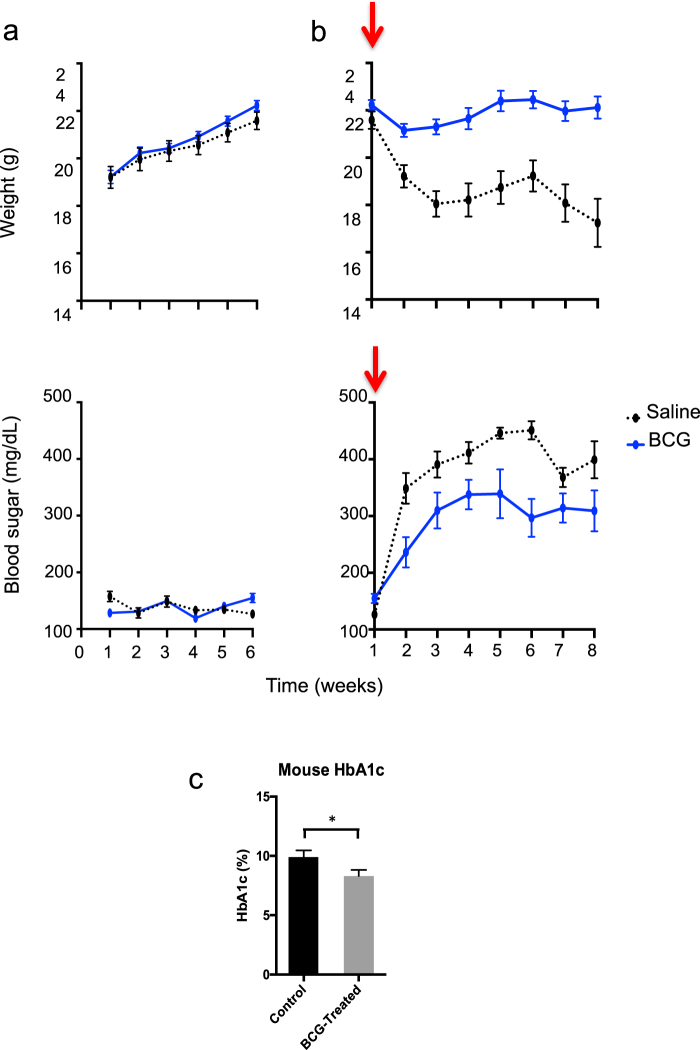Fig. 6.
BCG pre-administration reduces hyperglycemia in chemically-induced (Streptozocin) mice but does not induce hypoglycemia in normal mice. a Normal BALB/c mice were first studied in a normoglycemic state with (n = 12) and without BCG (n = 12) treatment for blood sugars and weight (left panels). BALB/c mice were rendered chemically diabetic (arrows) and studied with and without BCG treatment six weeks earlier with preventative pre-injections (right panels). Most mice became severely hyperglycemic after treatment with streptozocin (STZ) which selectively kills the insulin-secreting cells in the pancreas. All mice were monitored for blood sugar levels and weighed on a weekly basis. BCG-treated mice gained weight at the same rate as untreated control mice and had normal blood sugars with no indication of hypoglycemia (left panels, blue lines). After STZ induction of hyperglycemia, the control mice rapidly started to lose weight and became severely hyperglycemic within one week (right, black lines). In contrast, mice first treated with BCG before STZ treatment were able to maintain their weight and had markedly lower levels of hyperglycemia (right, blue line). b Measurements of HbA1c values in STZ-treated BALB/c mice after 6 weeks with and without prior BCG treatment show the protection afforded by BCG and the resulting lower HbA1c values of 85 ± 6.6 mmol/mol (9.9 ± 0.6% NGSP) without BCG vs. 67 ± 5.5 mmol/mol (8.3 ± 0.5% NGSP) with BCG treatment; p = 0.02, n = 19 surviving mice). c At 8 weeks after the induction of hyperglycemia, the BCG-treated mice had statistically lowered HbA1c values

